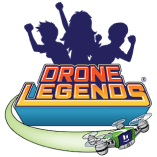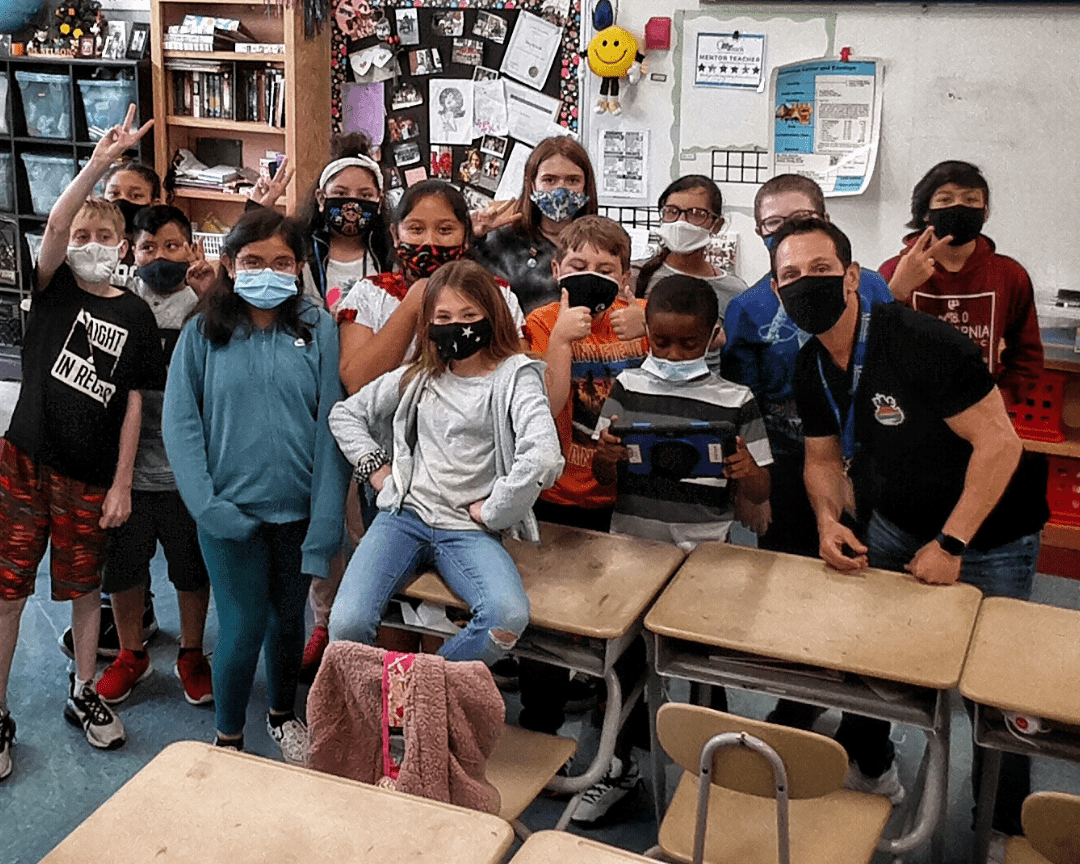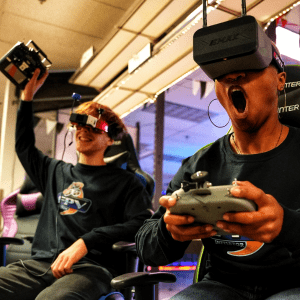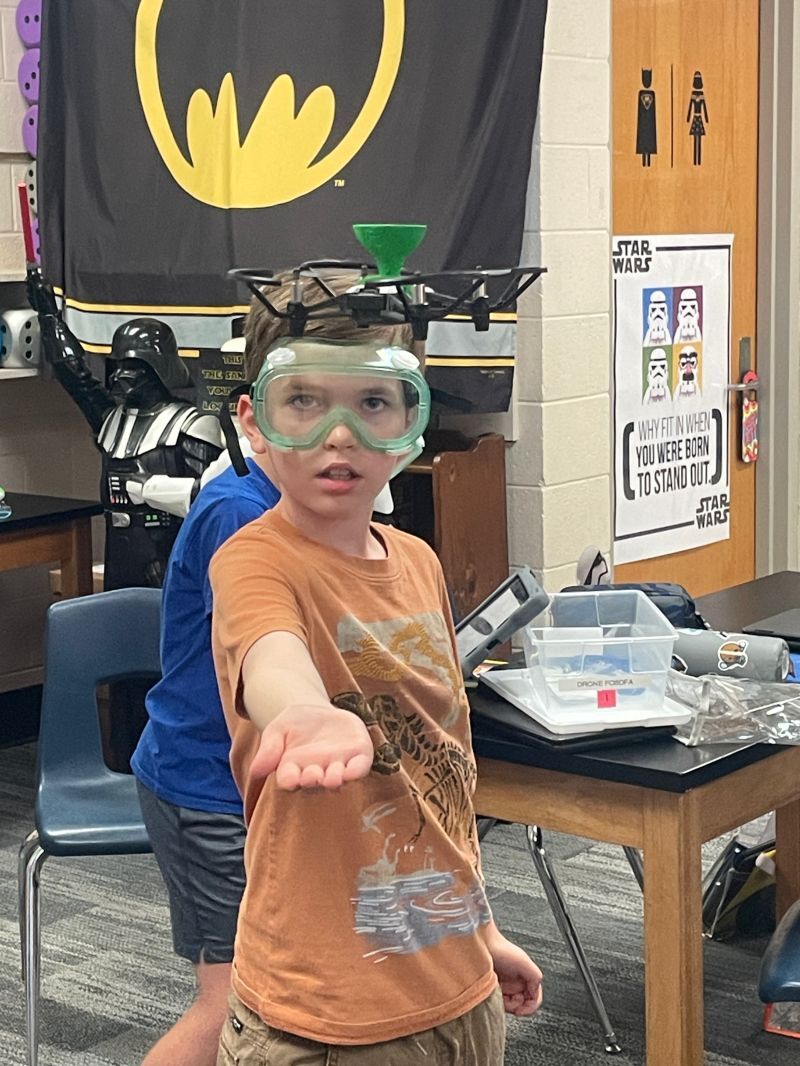Drones in education support action-packed, hands-on classroom experiences for students of all ages. When it comes to launching a drone program in K-12 classrooms, there are a few things teachers should know. Because drone programs in school are becoming more popular, we at Drone Legends tapped our experts in STEM curriculum and education for a little advice. Here are some tips for getting drones in your classroom to successfully support learning.
Want more of the same? Be sure to subscribe to our blog or contact us for a 1:1 convo about using drones in your classroom.
Define Your Why for Introducing a Drone Program in K-12 Classrooms
This may feel a little a priori (yeah, we know Latin), but you really should assemble a set of clear academic and social objectives for introducing drones in your classroom. Whether you’re a school administrator or classroom teacher, this is relevant to long-term success. There are plenty of reasons for using drones in school. . . off the top of our heads:
- To augment STEM curriculum, adding a hands-on component
- To create a more inclusive STEM classroom experience (that isn’t all coding and robotics but incorporates high-level concepts that any kid can enjoy)
- To let students own their educational process, exploring with greater independence and pursuing their personal interests
- To arm kids with STEM career skills (drones aren’t going anywhere, you know)
Drones address the “technology” piece of STEM, and here’s how:
- Drones are one of the best “technology” pieces you can use to address STEM because they have a very short learning curve and students can fail in their mission (an imperative piece of engineering) without destroying the tech.
- The failure of engineered code, a flight plan, or engineered obstacle course is obvious and the mission can be redesigned and tested immediately.
- Drones are one of the hottest and fastest tech careers today, and STEM career skills based on drones can be immediately put to use in a job.
- Teamwork in a drone career is clearly defined in the field and consistently used in the field so the classroom team roles can be relevant and real rather than contrived to fit a classroom.
It can be helpful to see other people’s “why” – after you’re done with this article, read this Round Up of Stories About Drones and Learning. You’ll see fresh and timely illustrations of how teachers, educators, school programs, and more (around the world) are using drones to empower and equip the STEM experts of the future.
Figure Out the Logistics
Once you understand the why of drones in alignment with your classroom educational standards and objectives, you need to work on the “how.” There are some logistics to implementing a drone program in K-12 classrooms, and here are the basics:
Licensing
Each region has unique standards for flying drones. In the U.S., there are rules for educational users of unmanned aircraft systems, which means drones. These rules aren’t complex, and it won’t be hard to meet them, but you do need to do that before you start using drones in your class.
Classroom Safety and Standards
Are drones in the classroom safe? Good question. The short answer is yes, with the caveat that you (and your students) have to follow the rules. Drone classroom safety is like any other kind of classroom safety: you have to define the guidelines and enforce them as needed.
We will say, the kind of drones you fly in a classroom aren’t heavy-duty, and they are unlikely to do any major damage. In fact, it’s a very safe endeavor with minimal risk. Even so, kids are unpredictable, so you’ll want to create a list of drone safety measures to make sure everyone’s following the plan and are only at risk of having their minds blown.
Find Drones for Classrooms
This is really only an Amazon search away, but you will need to perform some research to find the right drone for your classroom. Ideally, you want something lightweight and easy to use. At Drone Legends, we currently use DJI Tello drones. These are great drones for kids: they’re easy to fly, they perform all of the functions delineated in our drone missions, and they’re fairly intuitive and affordable. We’ve seen great success with them because they hover after take off (rather than flying forward immediately), as well as stopping and hovering if the user stops using the controls. This gives kids a beat to recover control, if they need to. If you’re curious how to make aerial maneuvers with Tello Drones, you can check out this video:
<iframe width=”560″ height=”315″ src=”https://www.youtube.com/embed/pVngyN-CteU” title=”YouTube video player” frameborder=”0″ allow=”accelerometer; autoplay; clipboard-write; encrypted-media; gyroscope; picture-in-picture” allowfullscreen></iframe>
It’s important to also consider how many drones you need. A drone program in a K-12 classroom needs to be hands-on. Students in any of those grades aren’t going to be interested in waiting around for too long for their turn to fly a drone. You’ll want to make sure you have the ratio right, with one drone for every few kids. Ideally, the classroom teacher facilitates, walking around and prompting the students, correcting and guiding as needed.
This segues nicely into our next point of consideration:
Use a Drone Curriculum
Whatever your role in a school, you know that without a plan, things will fall apart. If you just want to whiz a drone around for a day for fun, cool. But if you really want to implement a drone program in your classroom that inspires genuine learning, you need to follow a drone curriculum. Ours is used as a drone program in K-12 classrooms, and it’s best in class: check it out here.
The components that typify our drone curriculum, and should be included in whichever one you choose, are these:
- A teacher training and/or lesson plan component — We call ours the Educator Lesson Planner, and it’s essential that even if you have experience with drones, you have some kind of resource that teaches you how to teach kids about drones. It’s a different ballgame when you’re having to translate drone-related terms and concepts to kids. Some kind of guide will keep you from having to become a drone expert, and cut down on planning and prep time.
- A training manual or lookup resource for kids — In the Drone Legends curriculum, this is the Operations Manual. The ops manual turns kids into problem-solvers, and a resource like this should offer definitions, simplified concept explanations, important principles, and troubleshooting tips for operating a drone.
- An experiential element makes drones about more than play — Any drone curriculum should be more than fun and games: it should introduce students to the complex STEM concepts inherent in operating a drone. In our STEM drone curriculum, this is the student Mission Guide, and we are enormously proud of it. Ours is in a graphic format and features an exciting series of drone missions. Students work through real scenarios, navigating with age-appropriate levels of independence, and progressing through the mission to reach a resolution. This requires them to think critically, take ownership of the process, work together, and dive deep into real-world application. It’s a beautiful thing.
K-12 Drone Programs
Success for K-12 drone programs is really only a few steps away, and well within reach of any motivated administrator or educator. What better way to get kids excited about learning than to use the drones they’re always hearing about in the news? This is a powerful tool you can put directly in their hands, which equally educates and inspires them to imagine a bigger world, and their role in it. We love everything about that, which is why we’ve dedicated so much time and energy to bringing you the best drone program in the world.
Interested in learning more about bringing Drone Legends to a school near you? Let’s connect.




